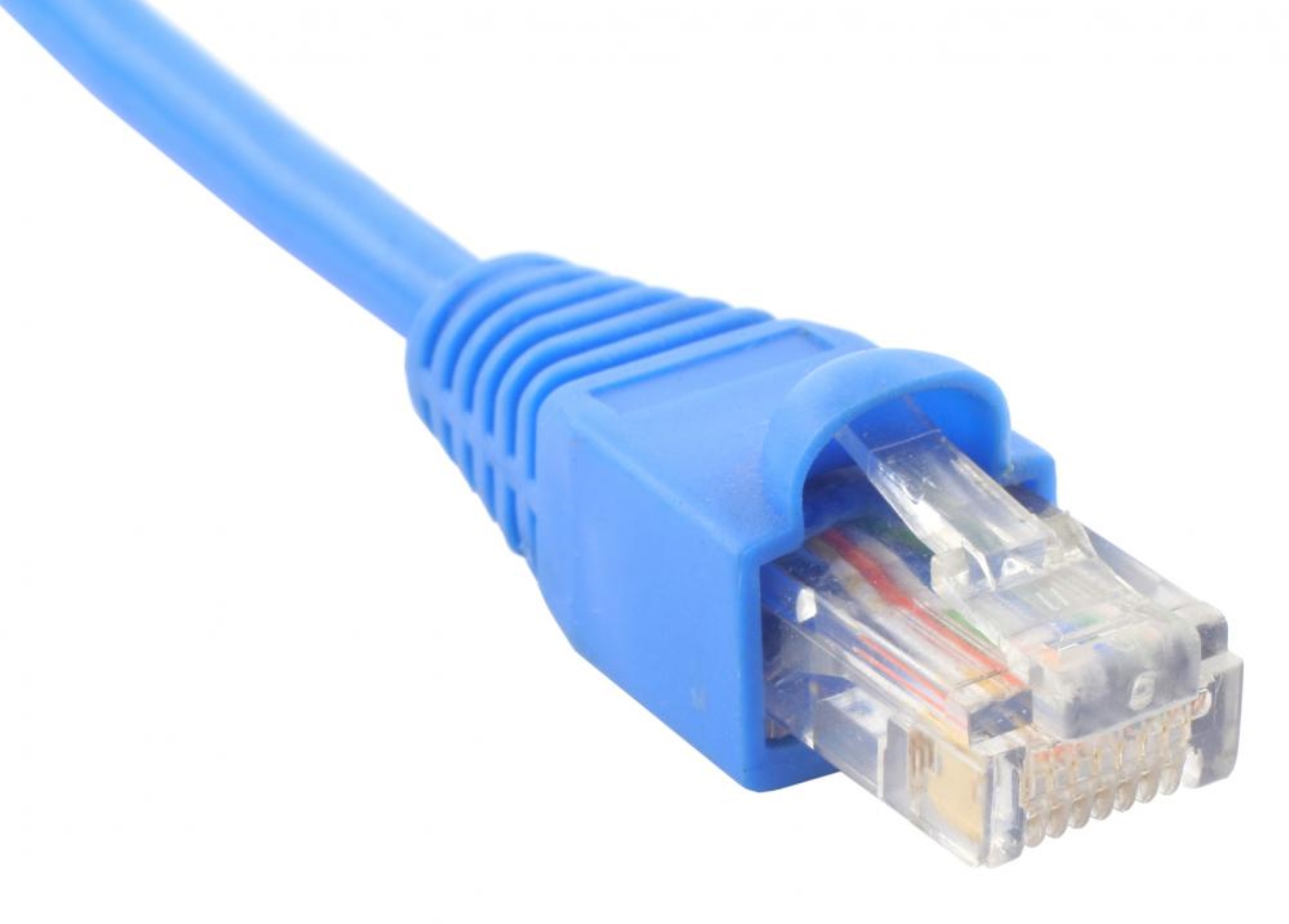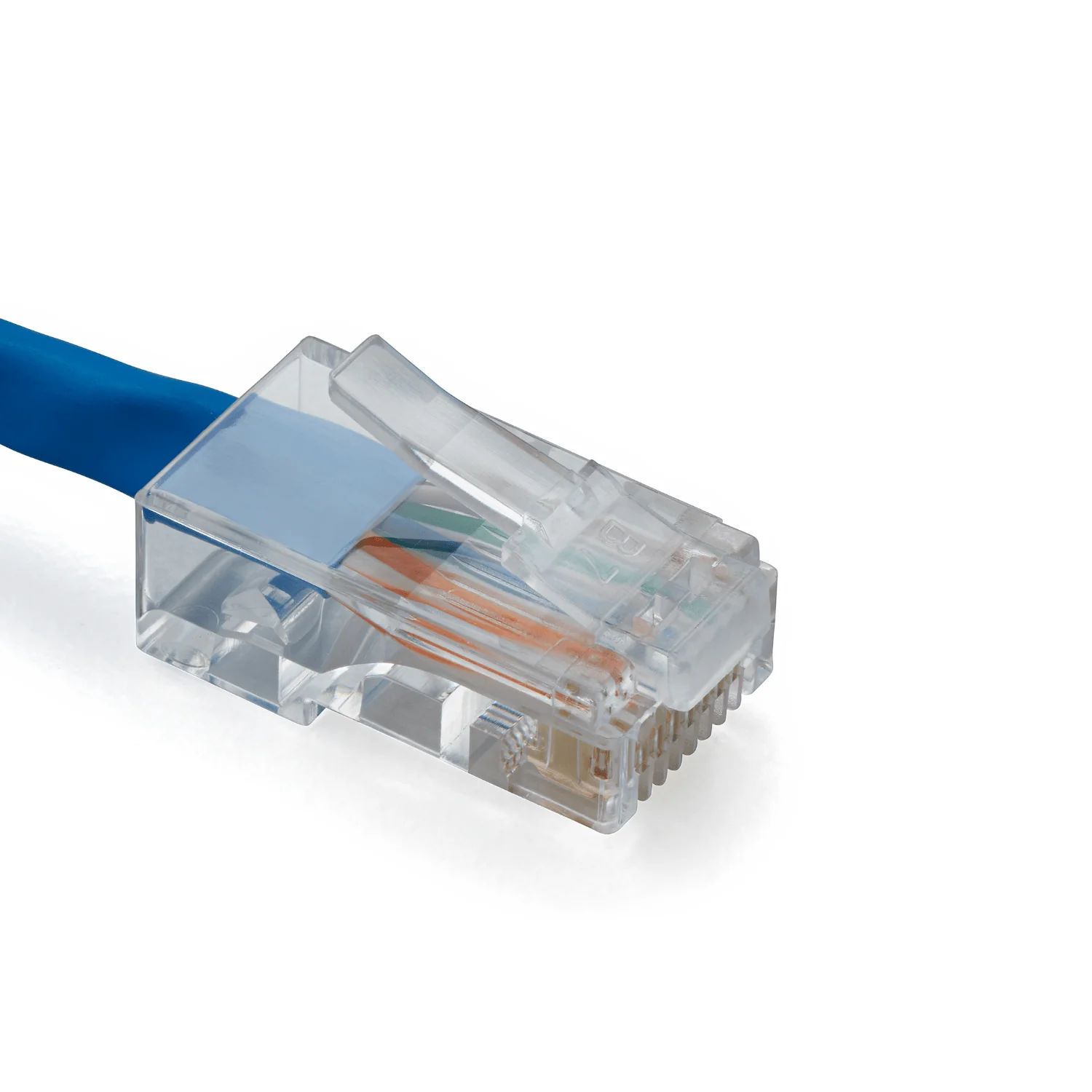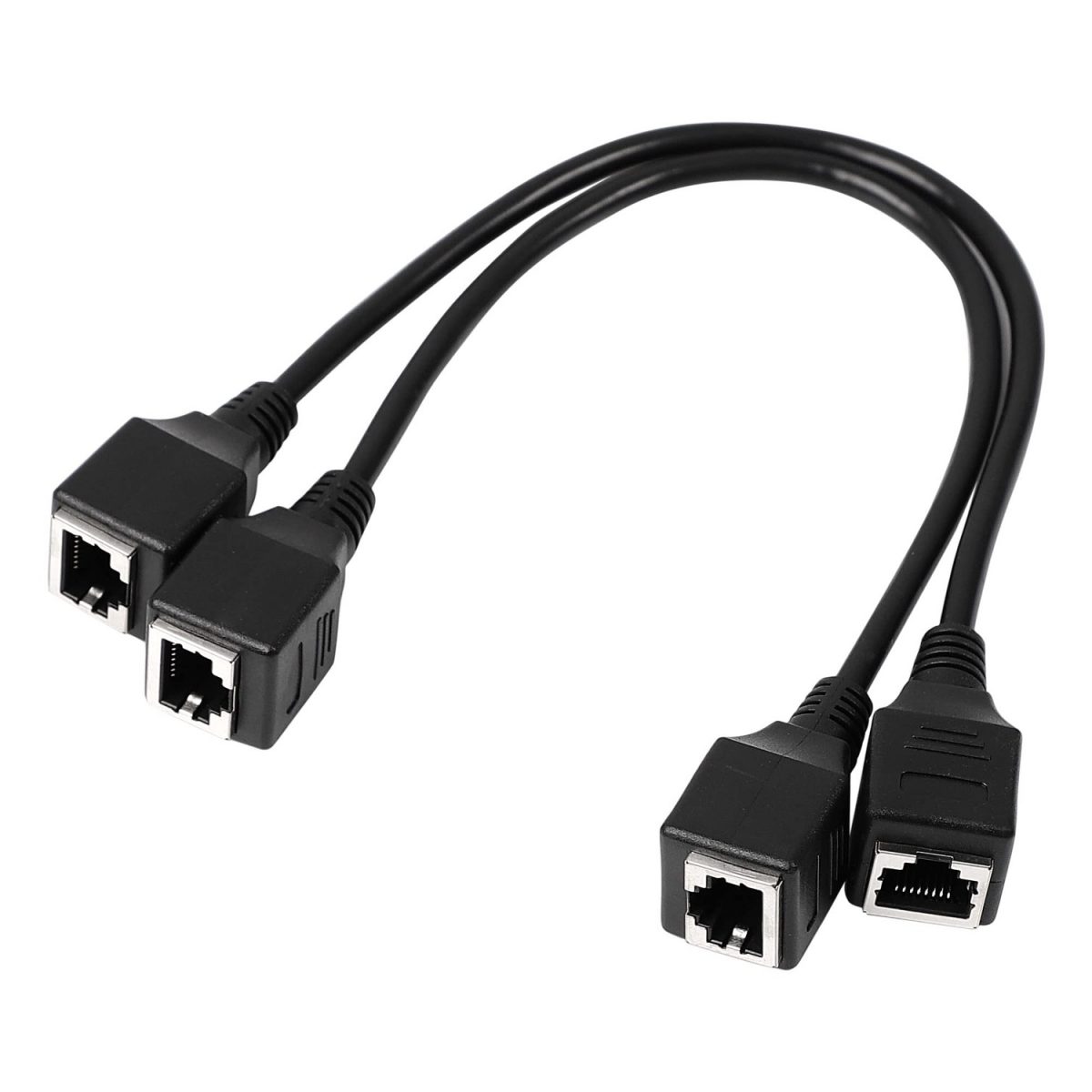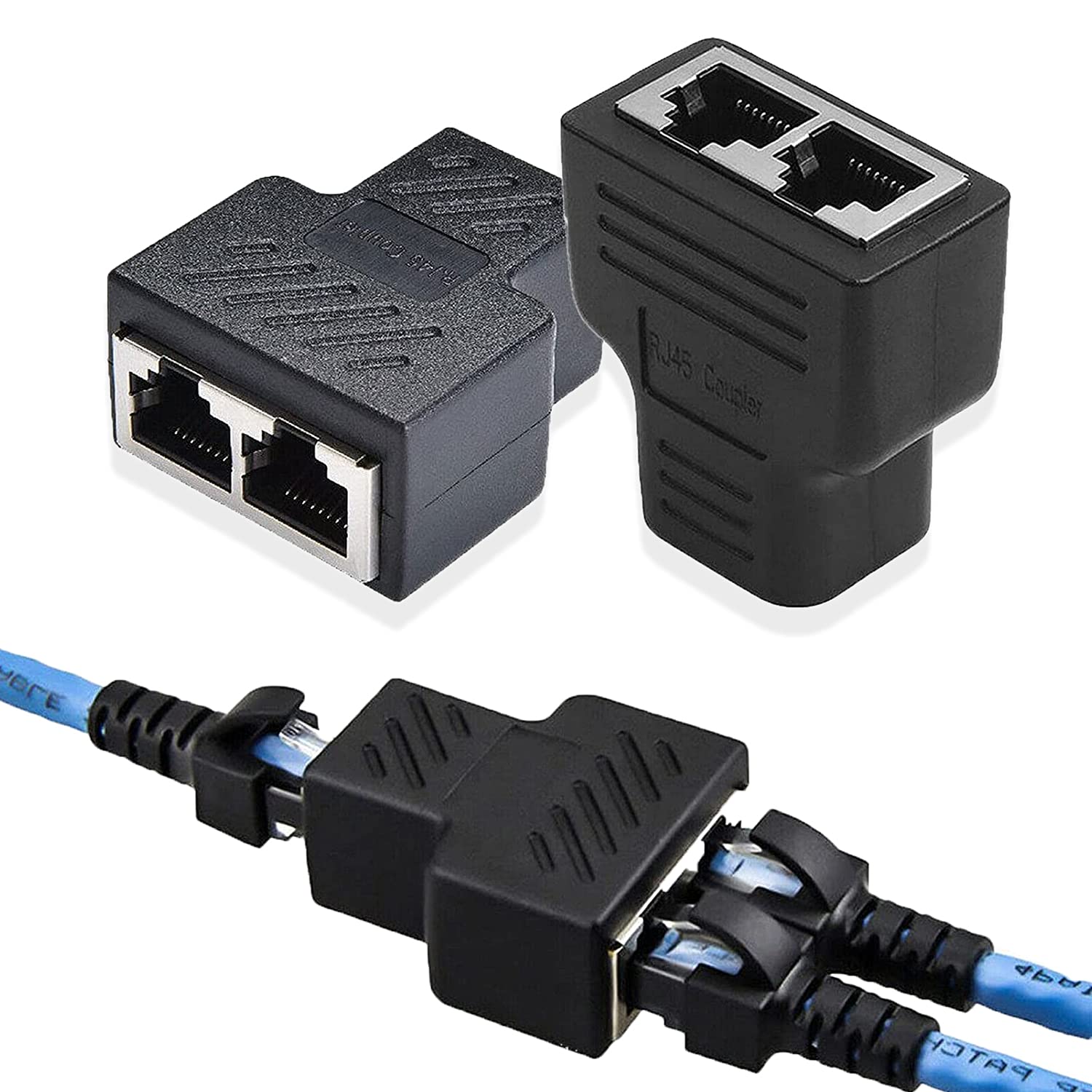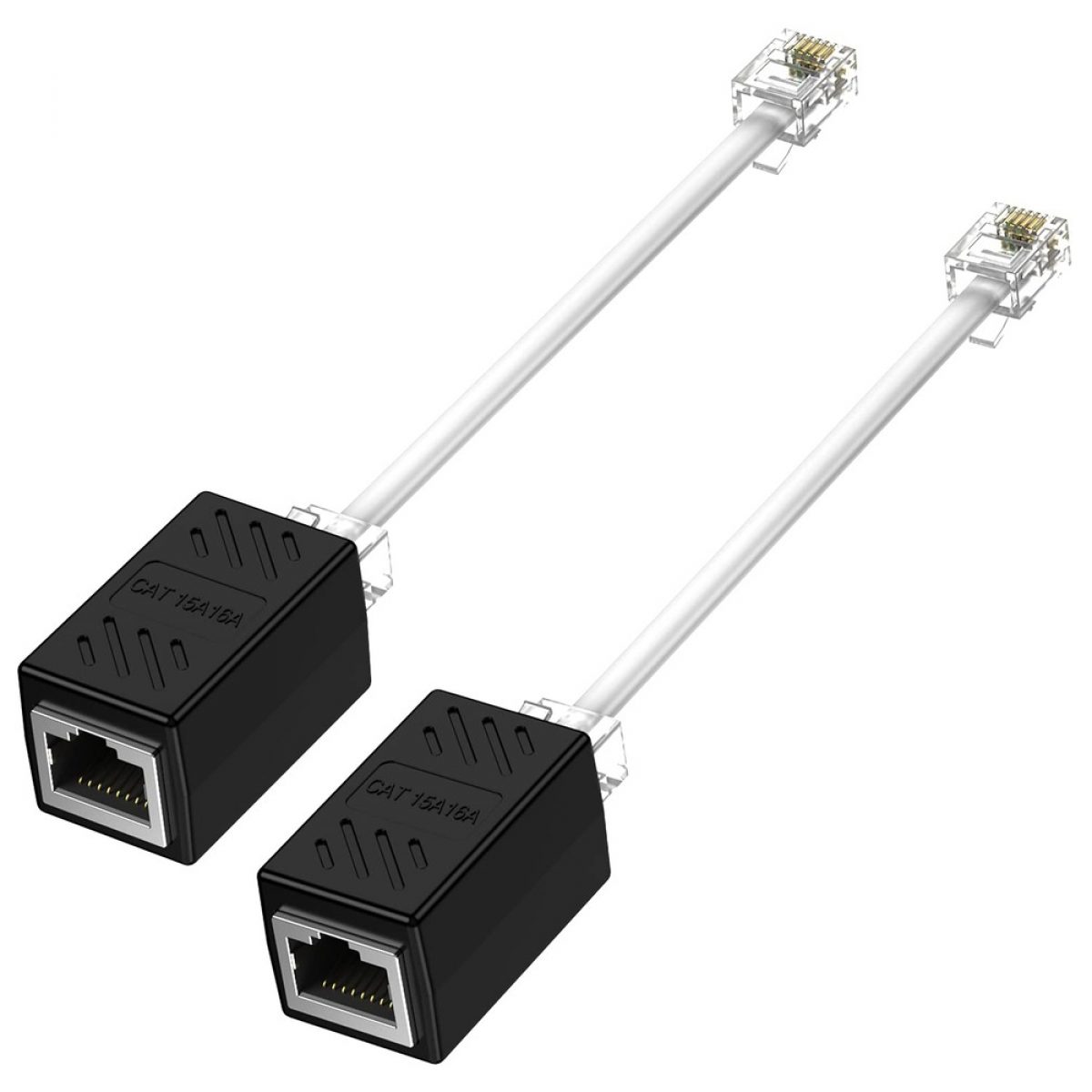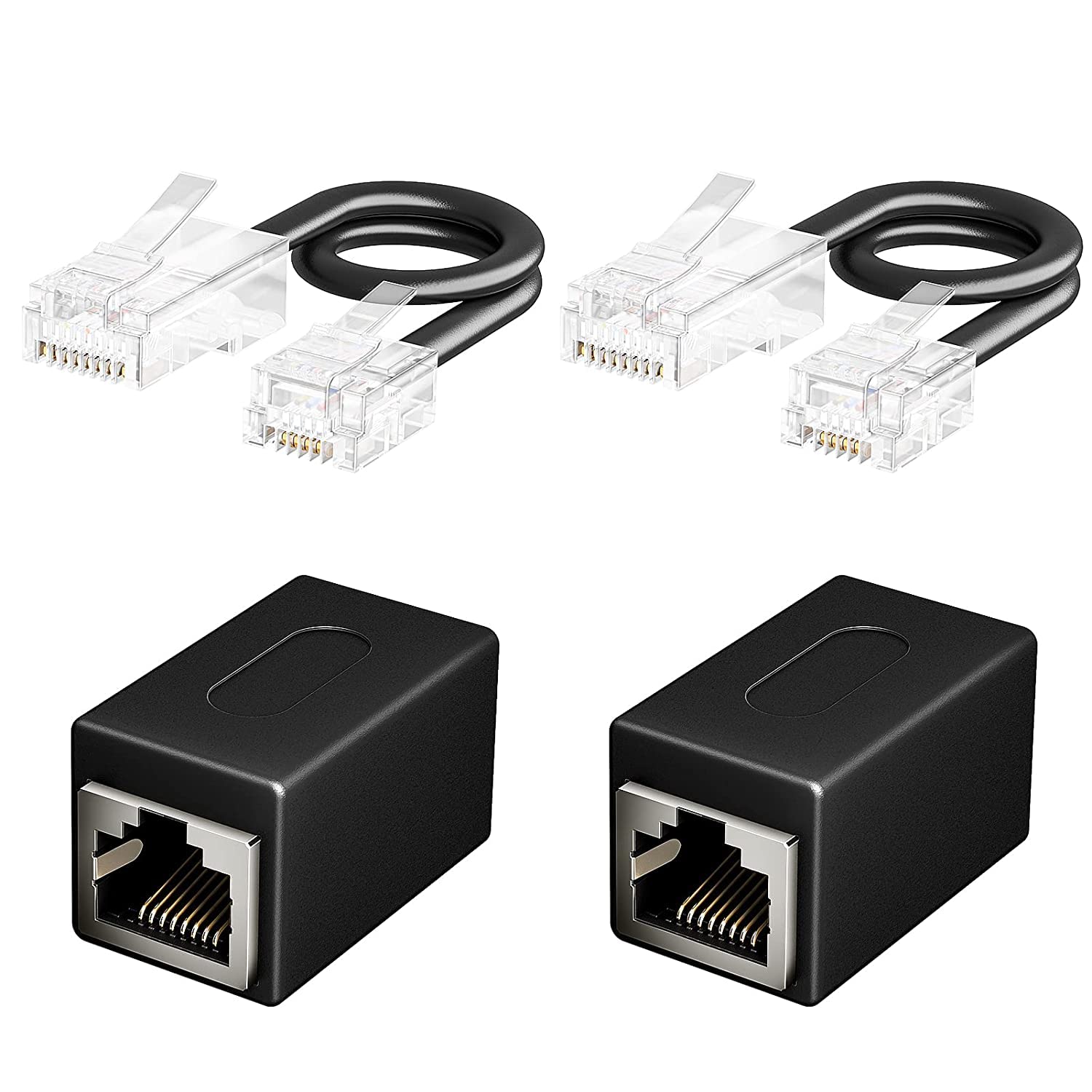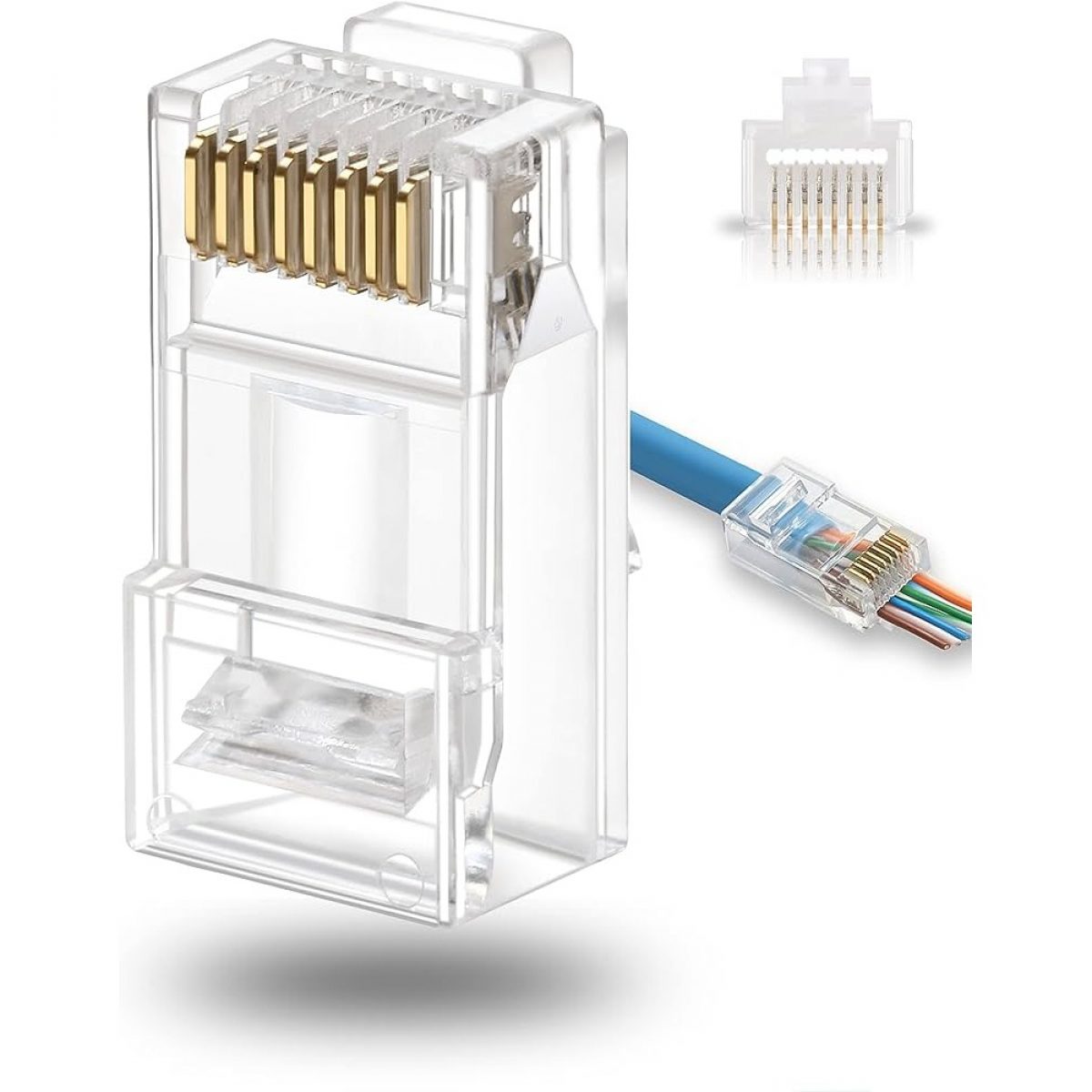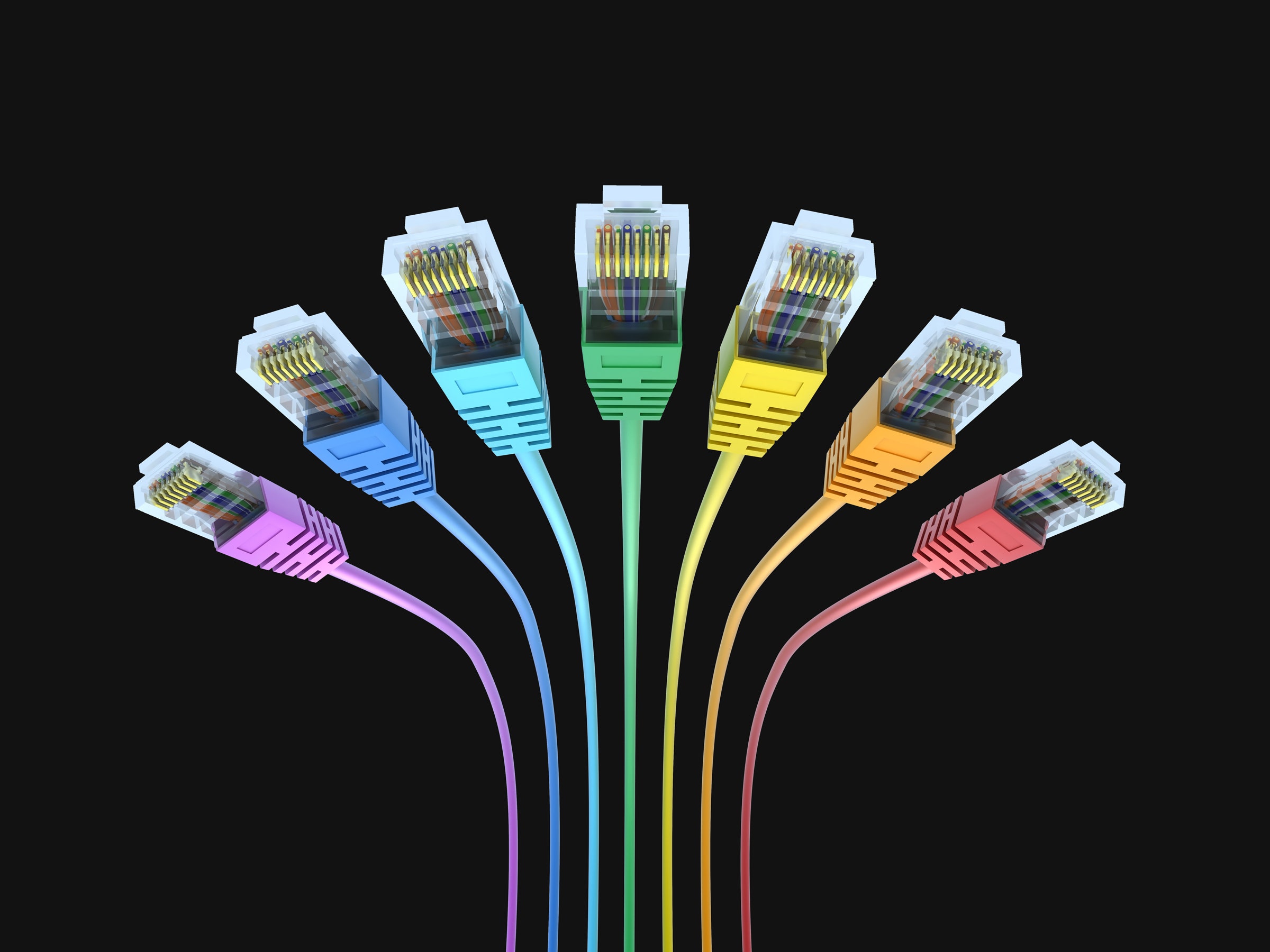Overview of RJ45 Ethernet
RJ45 Ethernet is a widely used technology in computer networking that allows devices to connect and communicate with each other over a local area network (LAN) or the internet. It is the most common form of network connection used in homes, offices, and data centers.
RJ45, short for Registered Jack 45, refers to the connector used to terminate network cables. It follows a standardized physical interface that enables the transmission of data packets between devices. The Ethernet part of the term refers to the networking technology that defines the format and protocols for data transmission in the LAN.
Ethernet has revolutionized the way we connect and share information. From simple file transfers to streaming high-definition videos, Ethernet has become an essential component of our digital lives. It offers faster speeds, lower latency, and higher reliability compared to other connectivity options, making it ideal for various applications, such as internet access, file sharing, video conferencing, online gaming, and more.
The physical characteristics of RJ45 Ethernet play a crucial role in ensuring a stable and secure connection. The RJ45 connector has eight pins arranged in a modular jack, with a locking mechanism to keep the cable securely in place. It uses twisted-pair cables, typically categorized into different levels, such as Cat5e, Cat6, and Cat6a, which determine the maximum speed and bandwidth capability.
The pin configuration of RJ45 follows a specific pattern to ensure compatibility and proper communication between devices. It uses all eight pins for transmission and reception of data signals, along with dedicated pins for power over Ethernet (PoE) applications. Properly aligning and terminating the cables using the T568A or T568B wiring standards is crucial for the successful transmission of data.
RJ45 Ethernet functions by using a series of protocols and technologies to enable devices to communicate with each other. It utilizes the Ethernet protocol, which determines the format and rules for data transmission, and the Internet Protocol (IP) for addressing and routing the data packets. It also employs various networking devices like switches, routers, and hubs to manage the flow of data across the network.
RJ45 Ethernet comes in different types to cater to various networking needs. The most common types include 10/100 Ethernet, which supports data transfer speeds of up to 100 Mbps, and Gigabit Ethernet (10/100/1000), which enhances the speed capability to 1 Gbps. There are also faster options, such as 10 Gigabit Ethernet (10 Gbps) and 40/100 Gigabit Ethernet (40 or 100 Gbps), which are widely used in enterprise-level networks.
The advantages of using RJ45 Ethernet are numerous. It offers faster speeds, greater reliability, and lower latency compared to wireless connections. It also provides better security and less interference, making it suitable for sensitive applications that require a stable and consistent network connection. Additionally, RJ45 Ethernet is backward compatible, allowing it to work seamlessly with devices using older Ethernet standards.
RJ45 Ethernet finds applications in various industries and environments. From home networking to large-scale corporate networks, it serves as the backbone of communication. It is used in connecting computers, printers, servers, IP phones, access points, security cameras, and more. It is also widely used in industrial applications for connecting machines and IoT devices.
Overall, RJ45 Ethernet has become an integral part of modern networking, enabling fast, secure, and reliable communication between devices. Its widespread use and standardization ensure interoperability and compatibility across different devices and networks. As technology continues to advance, Ethernet will continue to evolve, providing even faster and more efficient connectivity options for future networking needs.
What is RJ45?
RJ45 stands for Registered Jack 45 and refers to the connector that is commonly used in networking to terminate Ethernet cables. It is the standard connector for Ethernet connections and supports data transmission over local area networks (LANs).
The RJ45 connector is an eight-pin modular jack that is used to connect devices like computers, routers, switches, and IP phones to a network. It is designed to ensure a secure and reliable connection between these devices, allowing data to be transmitted and received effectively.
RJ45 connectors are commonly found in many applications, from home networks to large-scale enterprise networks. They are the primary interface for connecting devices to the network infrastructure, enabling communication and data transfer.
These connectors are typically found on the end of Ethernet cables, which are commonly referred to as patch cables or Ethernet cables. The cables are terminated with an RJ45 plug that is inserted into the RJ45 jack on the device or network equipment.
One of the key features of the RJ45 connector is its backward compatibility. This means that it can be used with various Ethernet standards, such as Cat5e, Cat6, and Cat6a. This allows for flexibility when connecting devices with different network capabilities, ensuring compatibility and seamless communication.
The RJ45 connector follows a specific pin configuration that establishes the connection between the cable and the device. It uses all eight pins for transmitting and receiving data signals, with dedicated pins for specific functionalities like power over Ethernet (PoE) or for providing a grounding connection.
RJ45 connectors are designed for easy installation and removal. They have a small latch or tab that locks the connector into place, ensuring a secure connection. This prevents the cable from being accidentally disconnected, which could disrupt the network connection.
In addition to Ethernet connections, the RJ45 connector is also used for other applications, such as Voice over IP (VoIP) telephony and video surveillance systems. It provides a reliable and standardized connection for these applications, allowing for seamless communication and data transfer.
Overall, RJ45 is a critical component in computer networking. It enables devices to connect to a network infrastructure, facilitating the transfer of data and communication between devices. The use of standardized connectors like RJ45 ensures compatibility and ease of use across various networking devices, making it a ubiquitous and essential technology in modern networking.
Importance of Ethernet in Networking
Ethernet has played a transformative role in shaping modern networking. As the most widely used technology for local area networks (LANs) and internet connections, Ethernet offers several key benefits that make it essential in the field of networking.
One of the primary advantages of Ethernet is its high data transfer speeds. With Ethernet, data can be transmitted at lightning-fast rates, allowing for quick and efficient communication between devices. This is especially important in today’s digital age, where large amounts of data are generated and shared daily. Whether it’s streaming high-definition videos, downloading large files, or conducting online conference calls, Ethernet provides the bandwidth necessary to handle these data-intensive tasks with ease.
Reliability is another critical aspect of Ethernet. Unlike wireless connections, Ethernet offers a stable and consistent network connection. This is particularly vital in environments where a loss of connection could have serious consequences, such as in business operations, medical facilities, or financial institutions. Ethernet’s reliability ensures uninterrupted data transmission, reducing the likelihood of signal interference and network disruptions.
Security is a top priority in networking, and Ethernet excels in this area. Wired Ethernet connections are inherently more secure than wireless connections because they are more difficult to intercept or hack. With wireless networks, there is a higher risk of unauthorized access and data breaches. Ethernet eliminates these concerns, making it an ideal choice for applications that require secure data transfer, such as online banking, e-commerce, and sensitive corporate networks.
Scalability is another advantage of Ethernet. As networks grow and expand, Ethernet can easily accommodate the increasing number of devices and data traffic. Ethernet switches and routers provide the flexibility to add more devices to the network without sacrificing performance. This makes Ethernet an excellent choice for small businesses, large enterprises, and even home networks that may see future growth.
Compatibility is a significant aspect of Ethernet’s importance in networking. Ethernet has become the industry standard for connecting devices and networking equipment. It allows for seamless communication between different devices, regardless of the manufacturer or operating system. Whether it’s a computer, printer, server, IP phone, or other network-enabled devices, Ethernet ensures that they can all communicate effectively, leading to increased productivity and streamlined workflows.
The cost-effectiveness of Ethernet cannot be overlooked. Ethernet infrastructure is readily available and widely supported, making it cost-efficient to implement and maintain. Additionally, the scalability and compatibility of Ethernet reduce the need for frequent upgrades or changes to the network infrastructure, resulting in long-term cost savings.
Overall, the importance of Ethernet in networking cannot be overstated. Its high-speed data transfer, reliability, security, scalability, compatibility, and cost-effectiveness make it the go-to technology for building robust and efficient networks. As technology continues to advance, Ethernet will continue to evolve, providing even faster speeds, greater security measures, and improved efficiency to meet the ever-growing networking needs.
Physical Characteristics of RJ45
The physical characteristics of the RJ45 connector play a crucial role in ensuring a reliable and secure network connection. Understanding these characteristics is essential for effectively connecting devices and establishing a stable Ethernet connection.
The RJ45 connector is a modular plug that is used to terminate Ethernet cables, enabling the transmission of data signals. It features eight pins arranged in a specific pattern within the connector. These pins are responsible for transmitting and receiving electrical signals that carry data between devices.
The size and shape of the RJ45 connector are standardized across the industry. It has a rectangular shape with a width of approximately 12.7mm (0.5 inches). This standardized size ensures compatibility and allows for the connection of RJ45 cables to various devices that have RJ45 jacks, such as computers, switches, routers, and network-enabled devices like printers and IP cameras.
One of the important physical characteristics of the RJ45 connector is its locking mechanism. The connector has a small tab or latch on its head that serves to securely lock the connector into the jack. When inserting the RJ45 connector into a compatible jack, the latch snaps into place, preventing accidental disconnection of the cable. This locking mechanism ensures a stable and uninterrupted network connection, even in high-traffic or physically demanding environments.
Another key physical characteristic is the number of pins within the RJ45 connector. The RJ45 connector has eight pins, numbered 1 to 8, arranged in a specific order. These pins are used to establish the electrical connections necessary for data transmission. Each pin has a specific function, such as transmitting data signals, receiving data signals, providing power over Ethernet (PoE), and grounding.
The RJ45 connector is designed to work with twisted-pair cables, which are commonly used in Ethernet networks. These cables consist of pairs of insulated copper wires twisted together to reduce interference and crosstalk. The RJ45 connector is designed to securely crimp onto the ends of these twisted-pair cables, ensuring proper contact and signal transmission.
It is worth noting that the physical characteristics of the RJ45 connector alone are not sufficient for establishing a successful network connection. Proper cable termination and adherence to the wiring standards, such as T568A or T568B, are equally important. Following these standards ensures that the cables are correctly connected to the respective pins of the RJ45 connector, resulting in proper signal transmission.
The physical characteristics of the RJ45 connector, including its standardized size, locking mechanism, and pin arrangement, are essential for enabling a stable and secure Ethernet connection. Combined with properly terminated twisted-pair cables, these characteristics ensure consistent and reliable data transmission between network devices.
Pin Configuration of RJ45
The pin configuration of the RJ45 connector is crucial for establishing proper communication and data transmission between devices in an Ethernet network. It follows a standardized pattern where each pin serves a specific function, ensuring compatibility and efficient connectivity.
The RJ45 connector has a total of eight pins, numbered and arranged in a specific order within the connector. The pins are typically paired, with each pair responsible for transmitting and receiving data signals. The pin configuration is the same for both ends of an Ethernet cable, ensuring proper alignment when connecting devices.
The following is the commonly used pin configuration for the RJ45 connector:
- Pin 1: Transmit Data + (TD+)
- Pin 2: Transmit Data – (TD-)
- Pin 3: Receive Data + (RD+)
- Pin 4: Not Used (N/C)
- Pin 5: Not Used (N/C)
- Pin 6: Receive Data – (RD-)
- Pin 7: Not Used (N/C)
- Pin 8: Not Used (N/C)
As mentioned, pins 1 and 2 form a pair responsible for transmitting data signals, while pins 3 and 6 form a pair responsible for receiving data signals. This distinction allows for bidirectional communication between devices in an Ethernet network.
Pins 4, 5, 7, and 8 are typically not used (N/C), particularly in standard Ethernet applications. However, these pins may have specific functions in other applications or in specialized cabling systems.
It is important to note that the pin configuration of the RJ45 connector is consistent across Ethernet standards, such as Cat5e, Cat6, and Cat6a. This standardized pinout ensures compatibility and makes it easy to connect devices irrespective of the Ethernet category or device manufacturer.
Properly terminating the network cables, following the T568A or T568B wiring standards, is crucial for the successful transmission of data. These standards define the color codes and pin assignments for each wire within the cable, ensuring uniformity and preventing compatibility issues.
The pin configuration of the RJ45 connector, along with correct cable termination, forms the foundation for establishing a reliable Ethernet connection. Each pin plays a specific role in transmitting and receiving data signals, allowing for efficient and error-free communication between devices within the network.
How RJ45 Works
RJ45 connectors are an integral part of Ethernet networking, facilitating the transmission of data between devices. Understanding how RJ45 works gives insight into the mechanisms behind successful data communication in an Ethernet network.
When two devices, such as a computer and a router, are connected using RJ45 connectors and Ethernet cables, a communication pathway is established. This pathway enables the transmission and reception of data signals, allowing for seamless communication between the devices.
The Ethernet protocol governs the format and rules for data transmission in Ethernet networks. It defines how data is packaged, addressed, and transferred across the network. In an RJ45 Ethernet setup, data is transmitted in the form of data packets.
Each device connected using RJ45 has a unique network interface card (NIC) or Ethernet port. The NIC is responsible for transmitting and receiving data signals through the RJ45 connector. Once data is generated or received by a device, it is converted into binary signals that can be transmitted over the Ethernet network.
When data is transmitted from one device to another, it goes through a series of steps. First, the data is divided into smaller packets. These packets include the payload, which contains the actual data, along with additional information, such as the source and destination addresses.
Each packet is then encapsulated with protocol-specific headers and trailers. These headers and trailers contain information necessary for proper routing and handling of the data packet as it traverses the network.
Once the packet is ready for transmission, it is converted into electrical signals and sent through the transmitting pairs of wires within the Ethernet cable. In the RJ45 connector, pins 1 and 2 are used for transmitting data signals, while pins 3 and 6 are used for receiving data signals.
On the receiving end, the electrical signals are picked up by the corresponding pins of the RJ45 connector. The receiving device’s NIC then converts the electrical signals back into a digital format that can be understood and processed by the receiving device.
For successful communication, devices within the network need to be configured with unique and compatible network settings. These settings include IP addresses, subnet masks, and other parameters that allow devices to identify and route data to the correct destination.
Ultimately, the proper functioning of RJ45 connections relies on adherence to wiring standards, correct termination of Ethernet cables, and compatibility between devices. These factors ensure that the data signals are transmitted accurately and efficiently, enabling effective communication within the Ethernet network.
By understanding how RJ45 works, network administrators and users can troubleshoot connectivity issues, configure network settings, and ensure efficient data transmission in Ethernet networks.
Types of RJ45 Ethernet
The RJ45 connector is used in various types of Ethernet connections, each offering different speeds and capabilities to meet the diverse needs of networking environments. Understanding the different types of RJ45 Ethernet is essential for selecting the appropriate solution for specific networking requirements.
1. 10/100 Ethernet: This type of Ethernet, also known as Fast Ethernet, supports data transfer speeds of up to 100 megabits per second (Mbps). It has two transmission speeds: 10 Mbps for older networks and 100 Mbps for more modern networks. 10/100 Ethernet is commonly used in home networks, small offices, and some legacy systems.
2. Gigabit Ethernet (10/100/1000): Gigabit Ethernet delivers significantly faster speeds compared to 10/100 Ethernet. It operates at 1 gigabit per second (Gbps), providing ten times the bandwidth of 10/100 Ethernet. Gigabit Ethernet is widely deployed in enterprise networks and enables efficient data transfer for applications that require high bandwidth, such as multimedia streaming and large file transfers.
3. 10 Gigabit Ethernet (10 Gbps): 10 Gigabit Ethernet offers even greater speed capabilities, operating at 10 Gbps. It is commonly used in data centers, network backbones, and high-performance computing environments. 10 Gigabit Ethernet enables faster and more reliable data transmission, supporting the transfer of large amounts of data over short distances.
4. 40/100 Gigabit Ethernet (40 or 100 Gbps): Designed for demanding applications, 40/100 Gigabit Ethernet offers blazing-fast speeds of either 40 or 100 Gbps, depending on the variant. It is primarily used in data centers and other high-performance computing environments where ultra-fast data transfer is critical.
It’s important to note that the speed of an Ethernet connection is affected by various factors, including the quality of the cabling, network equipment, and the capabilities of the connected devices.
Each type of RJ45 Ethernet is backward compatible with slower-speed Ethernet connections. For example, devices with a Gigabit Ethernet port can also connect to 10/100 Ethernet devices, allowing for seamless communication even between different Ethernet speeds.
The choice of RJ45 Ethernet type depends on the specific networking requirements and the available infrastructure. Factors like network size, bandwidth requirements, and the number of connected devices should be taken into consideration when determining the appropriate Ethernet type.
Before implementing a specific RJ45 Ethernet type, it’s crucial to ensure that the network equipment, cables, and devices support the chosen Ethernet standard. This ensures compatibility and optimal performance across the network.
In summary, the different types of RJ45 Ethernet, including 10/100 Ethernet, Gigabit Ethernet, 10 Gigabit Ethernet, and 40/100 Gigabit Ethernet, offer various speeds and capabilities to meet the diverse needs of networking environments. Each Ethernet type provides specific advantages, allowing for efficient data transfer and communication within the network.
Advantages of RJ45 Ethernet
RJ45 Ethernet, the standard connector used for terminating Ethernet cables, offers numerous advantages that make it the go-to choice for network connectivity. Understanding the advantages of RJ45 Ethernet helps to appreciate why it is widely adopted in various networking environments.
1. High Speeds: RJ45 Ethernet provides high-speed data transfer, allowing for fast and efficient communication between devices. With options like Gigabit Ethernet and 10 Gigabit Ethernet, data can be transmitted at gigabit or even multi-gigabit speeds, enabling quick file transfers, multimedia streaming, and other demanding applications.
2. Reliable Connection: Wired Ethernet connections offer a more reliable and stable connection compared to wireless alternatives. RJ45 Ethernet connections are immune to interference from other devices or environmental factors, ensuring consistent and uninterrupted data transmission. This is especially important for applications that require a constant and reliable network connection.
3. Security: With RJ45 Ethernet, network security is enhanced. Wired connections are more difficult to intercept or hack compared to wireless connections. This makes RJ45 Ethernet a preferred choice for transferring sensitive data, such as in corporate networks, financial institutions, and other environments where data security is of utmost importance.
4. Scalability: RJ45 Ethernet is highly scalable, allowing for the expansion of network infrastructure as needed. Ethernet switches and routers can be easily added to the network to accommodate additional devices and increased data traffic. This scalability makes RJ45 Ethernet suitable for both small office networks and large enterprise networks that require future growth and expansion.
5. Compatibility: One of the main advantages of RJ45 Ethernet is its compatibility. It is an industry-standard connector that works seamlessly across various devices and network equipment. Whether it’s connecting computers, printers, routers, or switches, RJ45 Ethernet ensures interoperability, making it easy to integrate devices and establish reliable network connections.
6. Cost-Effectiveness: Implementing RJ45 Ethernet is generally cost-effective. Ethernet cables and connectors are widely available and affordable, making it a budget-friendly option for networking solutions. Additionally, the compatibility and scalability of RJ45 Ethernet reduce the need for frequent upgrades or changes to the network infrastructure, resulting in long-term cost savings.
7. Backward Compatibility: RJ45 Ethernet is backward compatible with previous Ethernet standards. This means that devices with newer Ethernet ports can still connect to devices using older versions of Ethernet. This compatibility ensures seamless communication and transfer of data between devices with different Ethernet capabilities.
In summary, the advantages of RJ45 Ethernet, including high speeds, reliable connection, security, scalability, compatibility, cost-effectiveness, and backward compatibility, make it a preferred choice for networking. RJ45 Ethernet provides fast, stable, and secure communication between devices, enabling efficient data transfer and supporting the diverse networking needs of various industries and environments.
Applications of RJ45 Ethernet
RJ45 Ethernet, with its reliable and high-speed connectivity, finds a wide range of applications across different industries and environments. Understanding the various applications of RJ45 Ethernet highlights its versatility and importance in modern networking.
1. Home Networks: RJ45 Ethernet is commonly used in home networks to connect computers, laptops, smart TVs, gaming consoles, printers, and other devices. It provides a stable and fast connection for internet access, file sharing, media streaming, and online gaming.
2. Small to Medium-Sized Offices: Small and medium-sized offices often rely on RJ45 Ethernet for their networking needs. It allows for seamless communication and file sharing among computers, printers, and other office equipment. RJ45 Ethernet provides a stable and reliable connection, supporting tasks like email communications, document sharing, and video conferencing.
3. Data Centers: Data centers handle massive amounts of data and require fast and reliable connectivity. RJ45 Ethernet is widely used in data centers for interconnecting servers, storage systems, and network switches. High-speed options like 10 Gigabit and 40/100 Gigabit Ethernet are commonly deployed in data centers to ensure efficient data transmission.
4. Enterprise Networks: Large-scale enterprises rely on RJ45 Ethernet to connect multiple office locations, data centers, and remote offices. Ethernet switches are used to manage and route network traffic, providing connectivity for computers, servers, IP phones, access points, and other devices. Gigabit and 10 Gigabit Ethernet are commonly used to support the high bandwidth requirements of enterprise environments.
5. Industrial Applications: RJ45 Ethernet has found its way into industrial environments, connecting machines, sensors, and other devices in industrial automation and Internet of Things (IoT) systems. Robust and durable RJ45 connectors are used in harsh industrial environments to ensure reliable communication and control.
6. Video Surveillance Systems: RJ45 Ethernet is essential in video surveillance systems, connecting IP cameras to network video recorders (NVRs) and video management systems (VMS). It allows for the transmission of high-definition video feeds over the network, enabling real-time monitoring and recording of surveillance footage.
7. Telecommunications: RJ45 Ethernet is widely used in telecommunications for connecting IP phones, multipurpose telecommunication devices, and networking equipment. It provides reliable voice and data communication, supporting VoIP (Voice over IP) services and ensuring clear and stable phone calls.
8. Education Institutions: RJ45 Ethernet is utilized in schools, colleges, and universities to provide network connectivity to classrooms, computer labs, and administrative offices. It supports internet access, computer networking, and online learning platforms.
9. Healthcare Facilities: RJ45 Ethernet is essential in healthcare environments, facilitating connectivity for medical equipment, electronic health records (EHR) systems, telemedicine platforms, and communication between healthcare professionals. It ensures secure and reliable data transfer for critical medical information.
10. Hospitality and Entertainment Venues: Hotels, restaurants, and entertainment venues rely on RJ45 Ethernet to offer reliable internet access to guests and patrons. It supports guest services, online reservations, point-of-sale (POS) systems, and entertainment systems.
The applications of RJ45 Ethernet are diverse and span numerous industries and environments. Its reliable, fast, and secure connectivity makes it a cornerstone of modern networking, enabling efficient communication, data transfer, and collaboration across various devices and systems.
Conclusion
RJ45 Ethernet is an essential technology that revolutionizes modern networking. With its standardized connector and reliable connectivity, RJ45 Ethernet enables efficient communication, data transfer, and collaboration in various industries and environments.
The physical characteristics of the RJ45 connector, including its size, locking mechanism, and pin configuration, ensure a secure and stable network connection. Proper termination of Ethernet cables according to wiring standards is crucial for successful data transmission.
RJ45 Ethernet offers numerous advantages, such as high data transfer speeds, reliability, security, scalability, compatibility, and cost-effectiveness. It meets the diverse networking needs of homes, offices, data centers, and industrial environments.
From home networks to enterprise-level infrastructures, RJ45 Ethernet finds applications in a wide range of environments. It enables internet access, file sharing, media streaming, video surveillance, telecommunication services, and more.
The different types of RJ45 Ethernet, including 10/100 Ethernet, Gigabit Ethernet, 10 Gigabit Ethernet, and 40/100 Gigabit Ethernet, offer varying speeds and capabilities to cater to specific networking requirements.
In conclusion, RJ45 Ethernet plays a vital role in connecting devices, facilitating data transmission, and empowering modern networking. Its compatibility, reliability, and versatility make it the preferred choice for networking professionals and users in an increasingly interconnected world.







